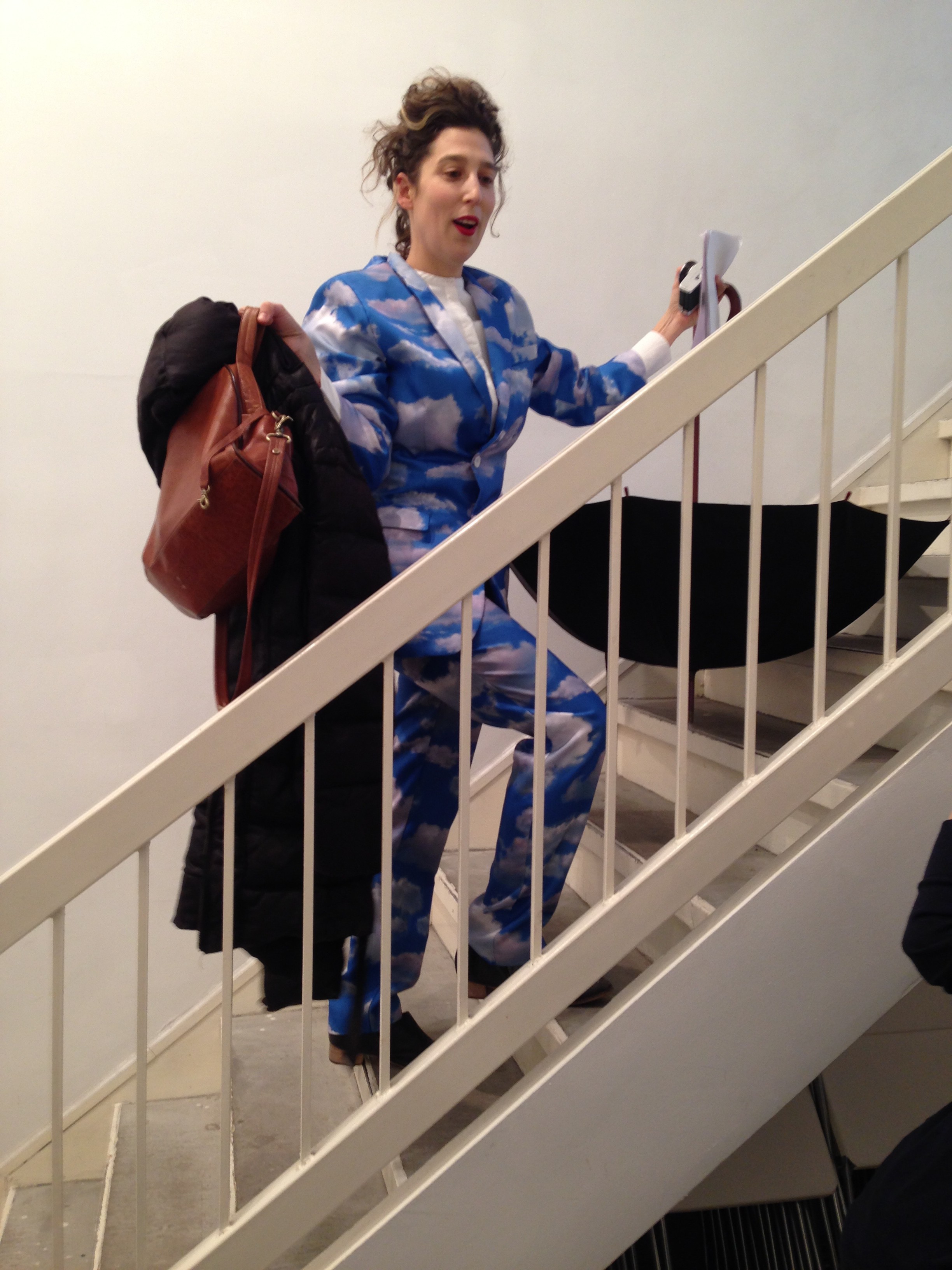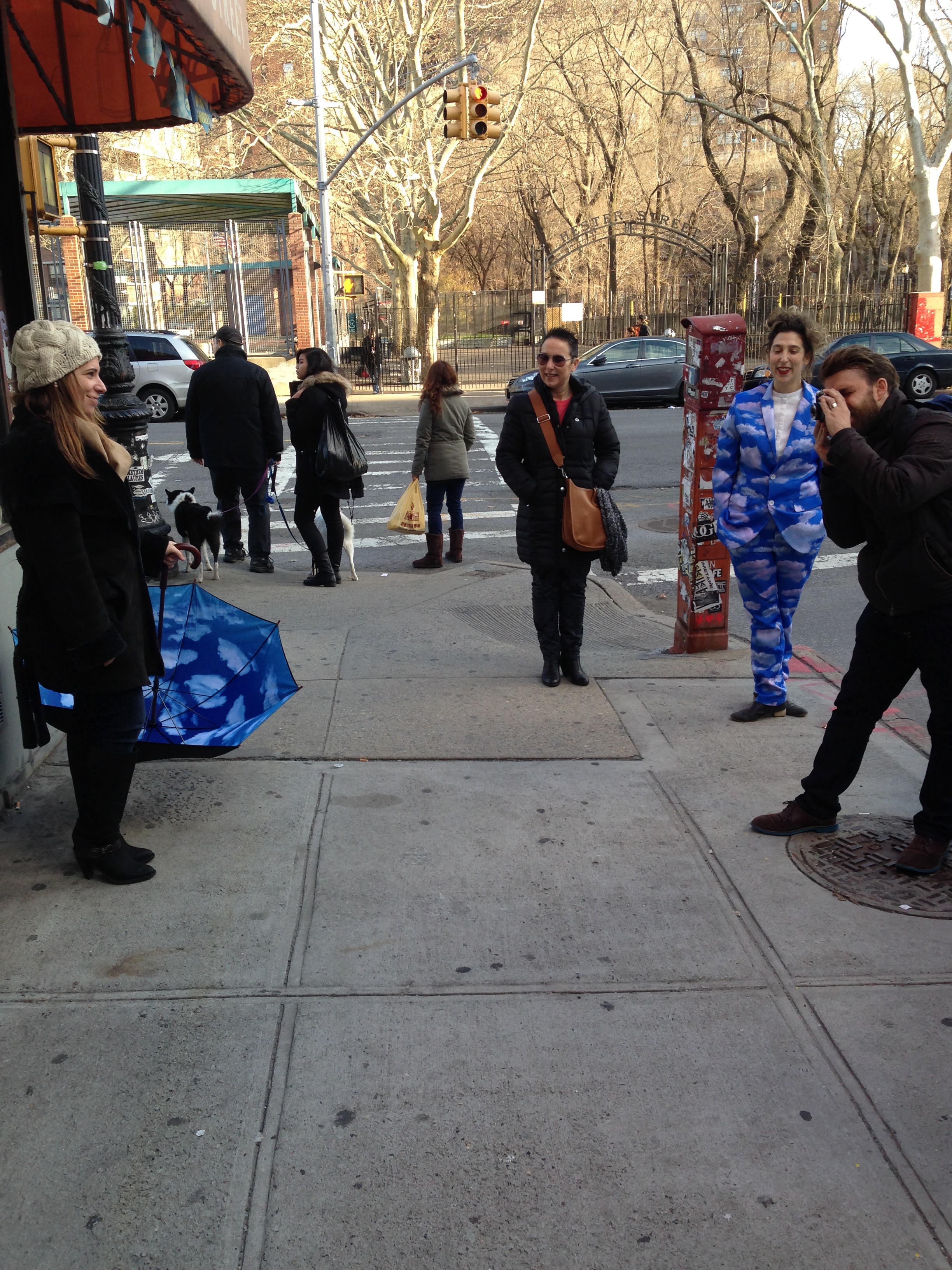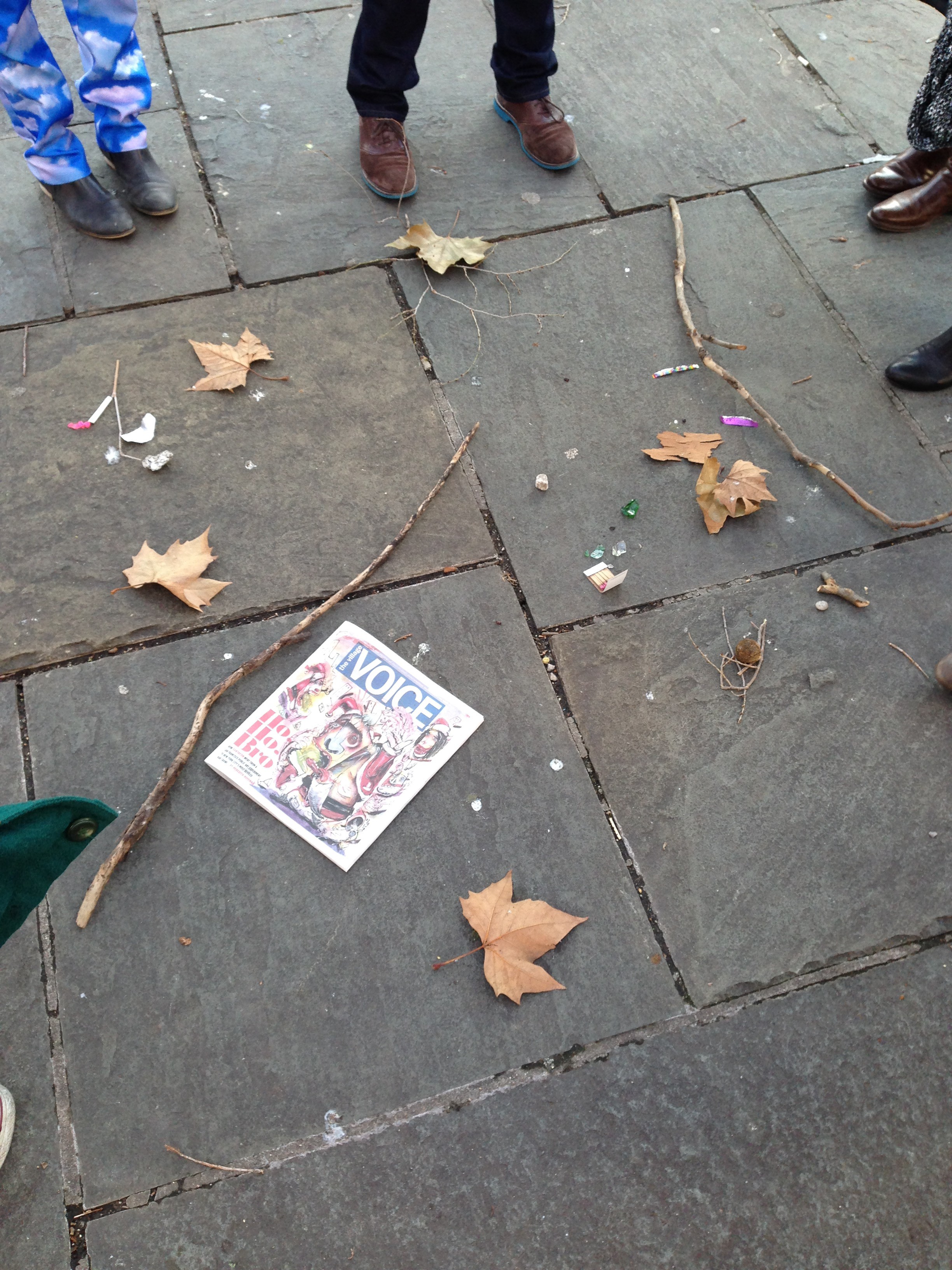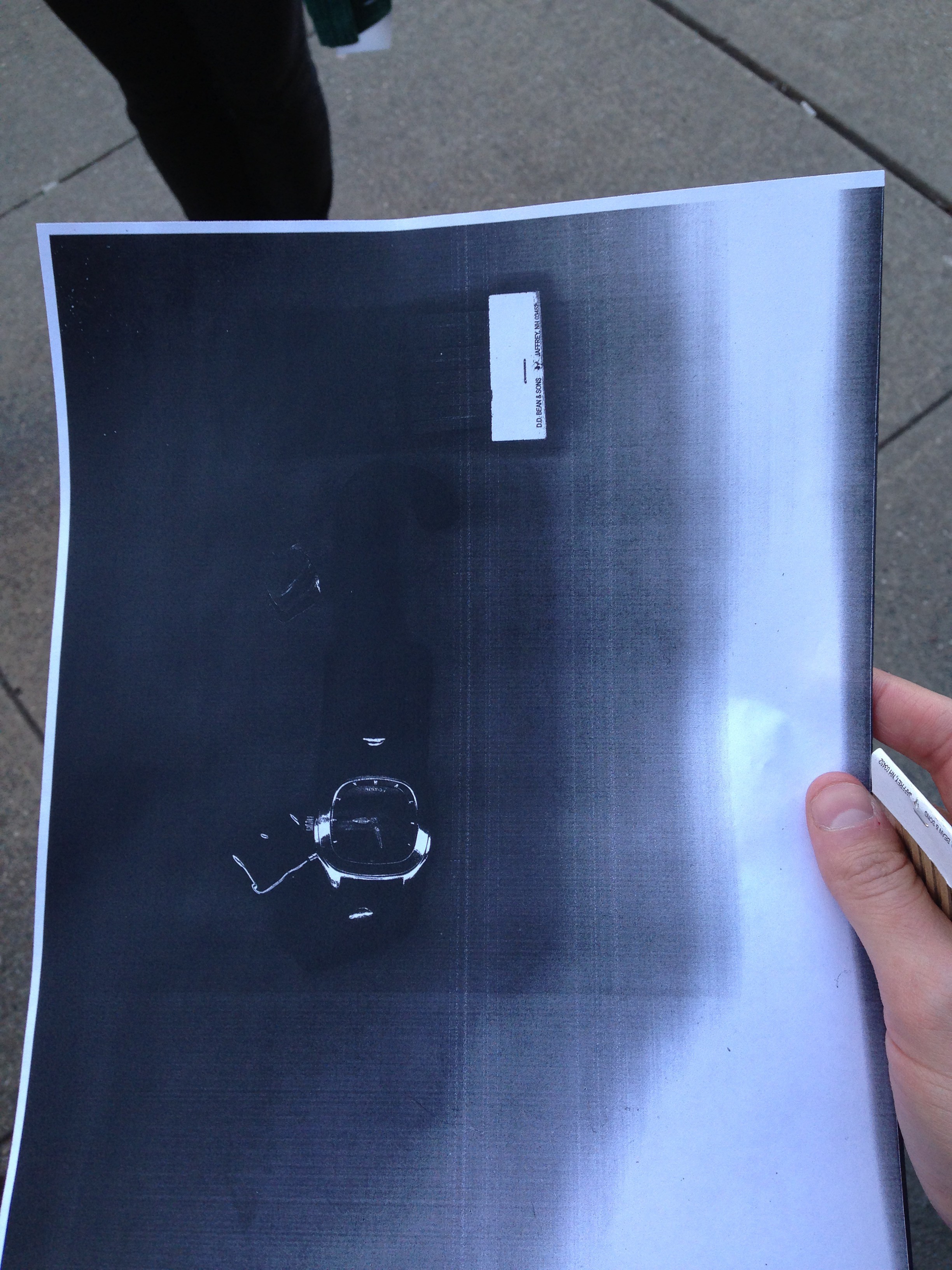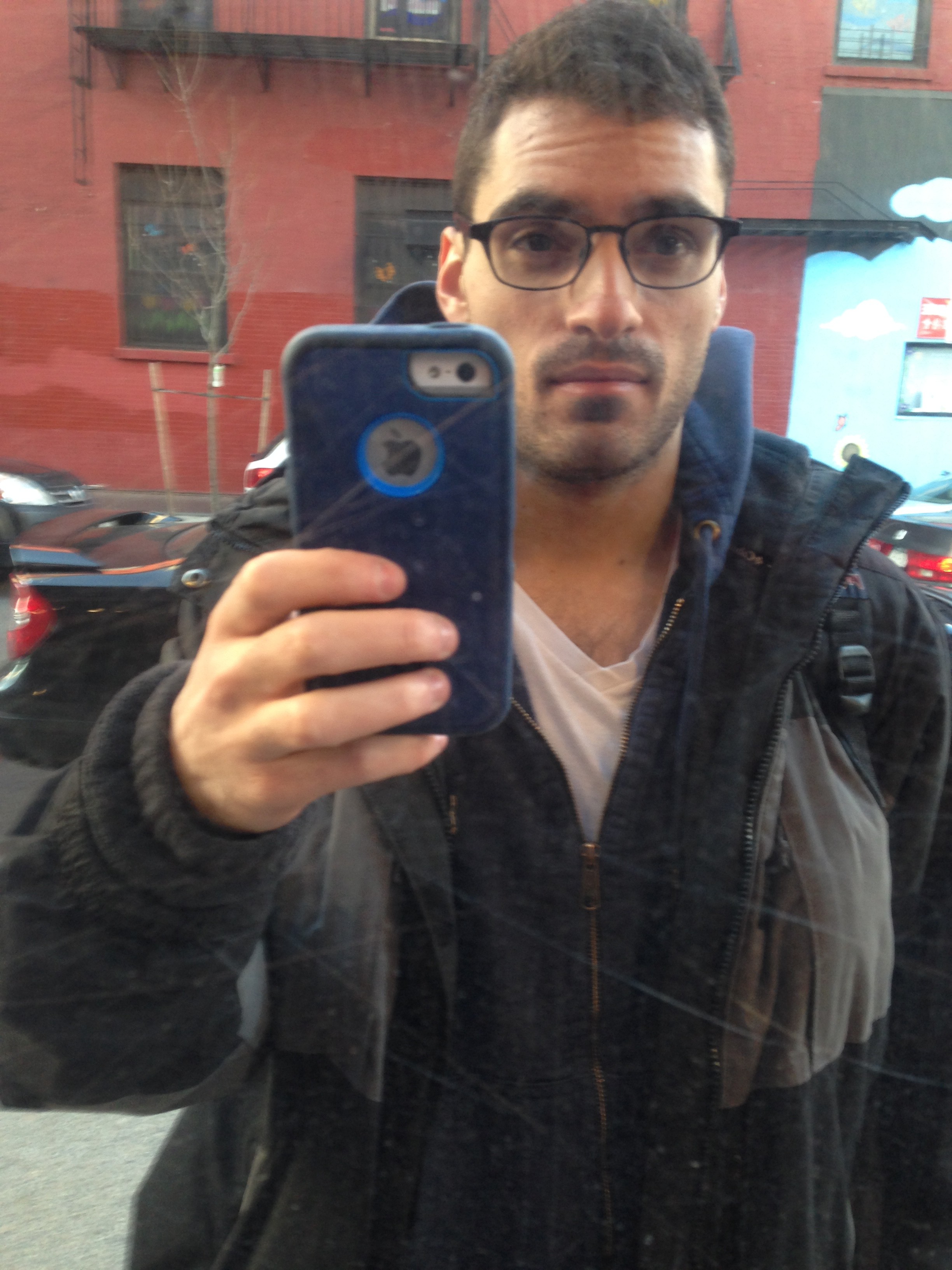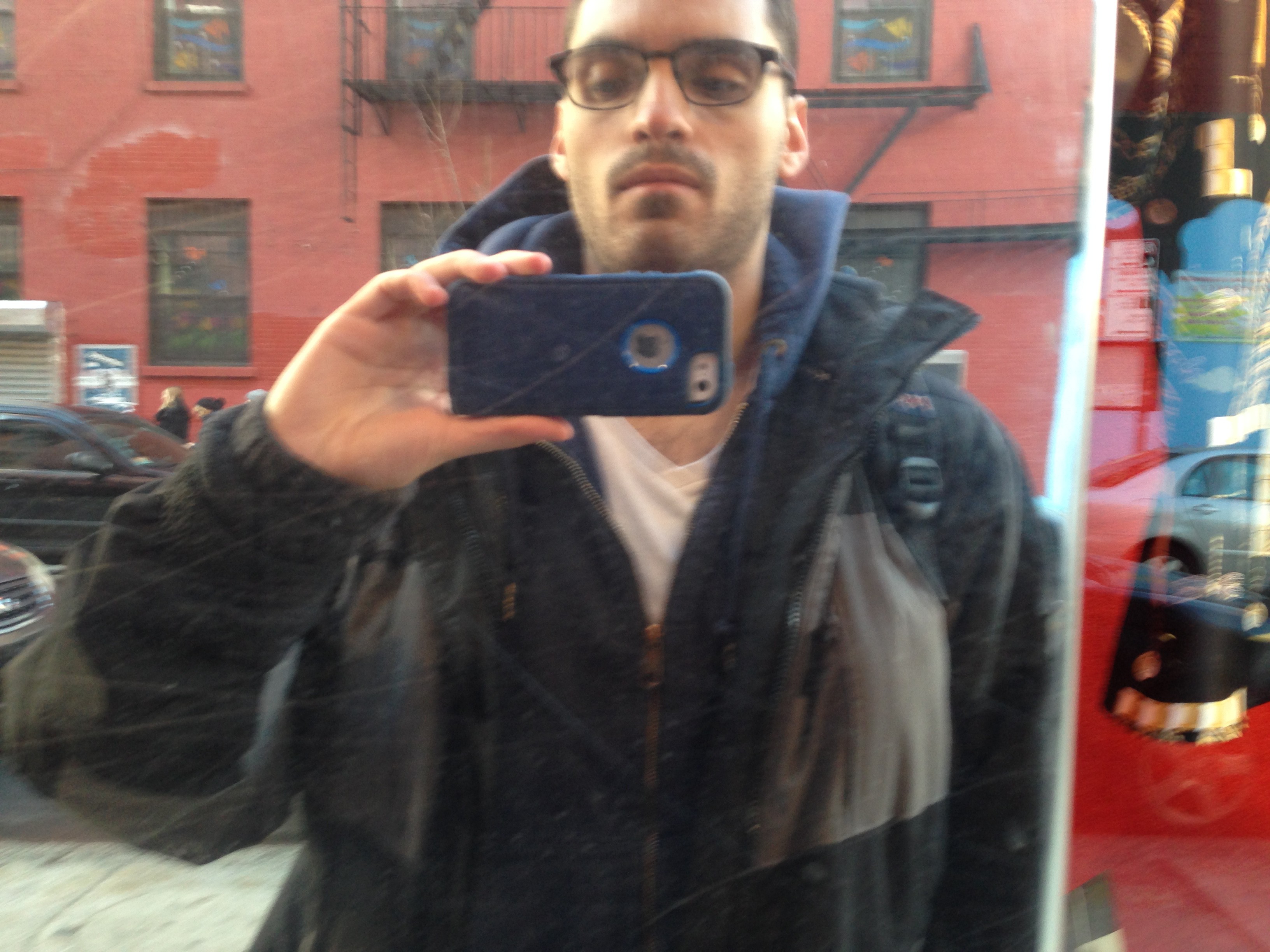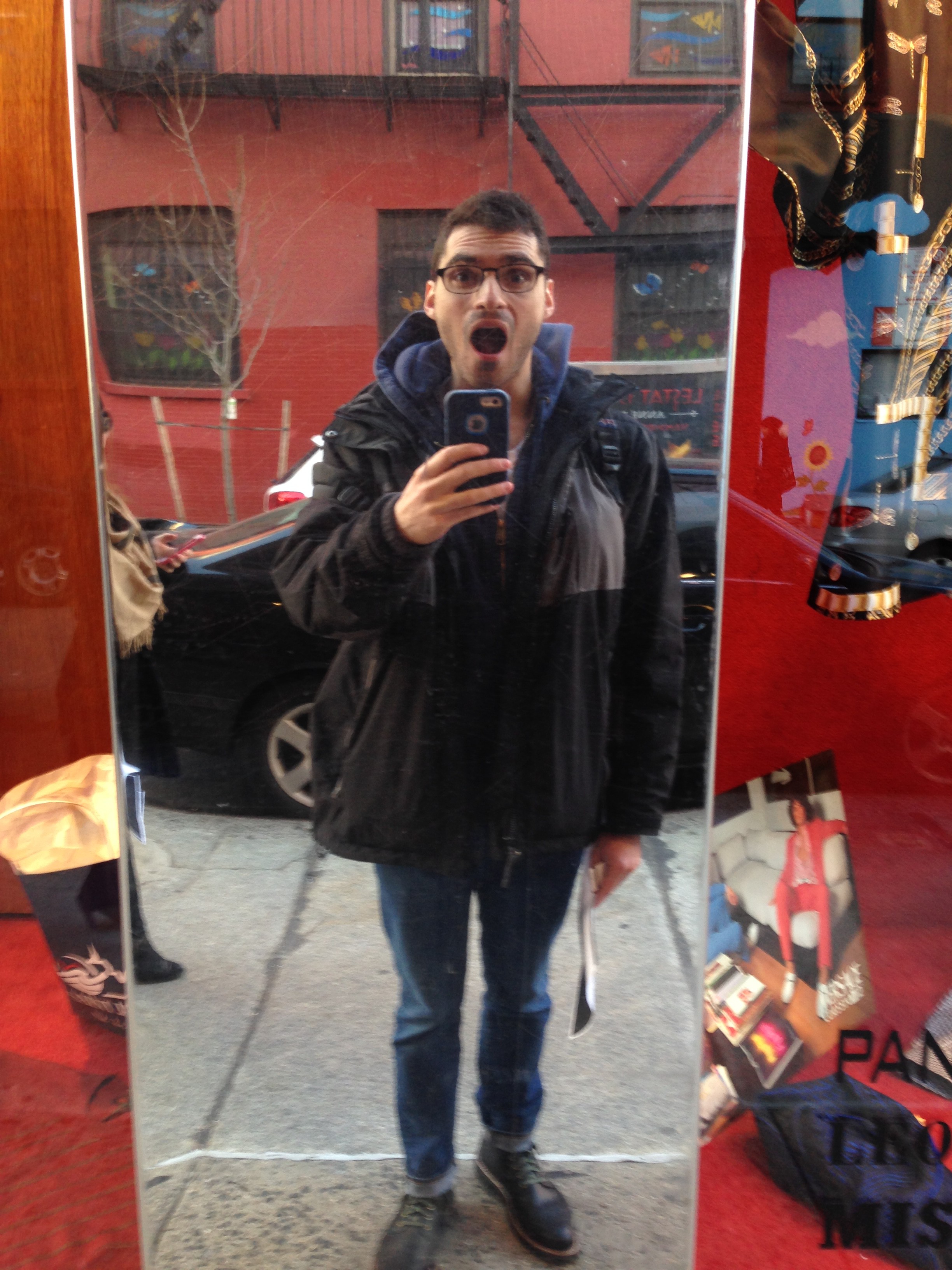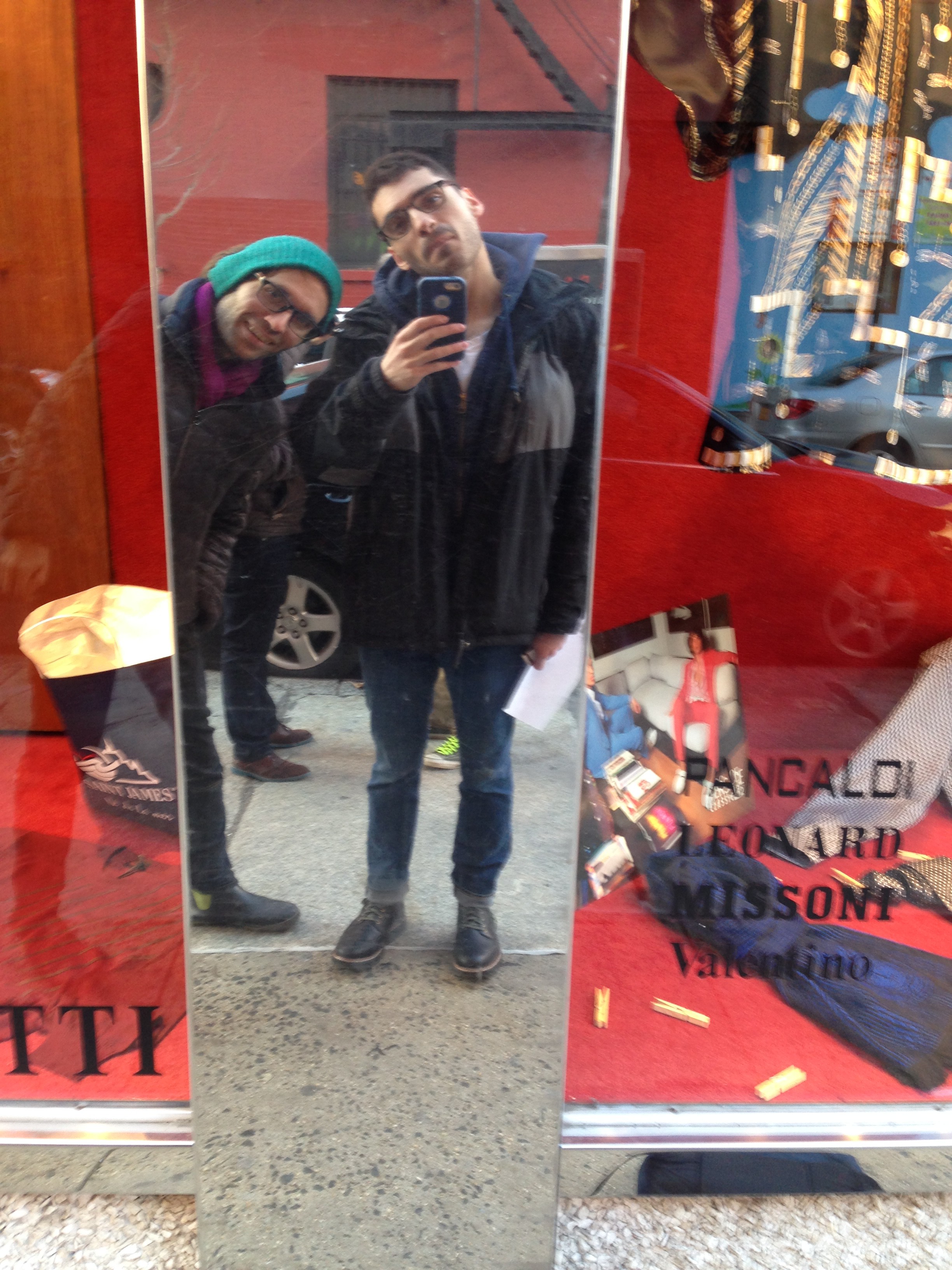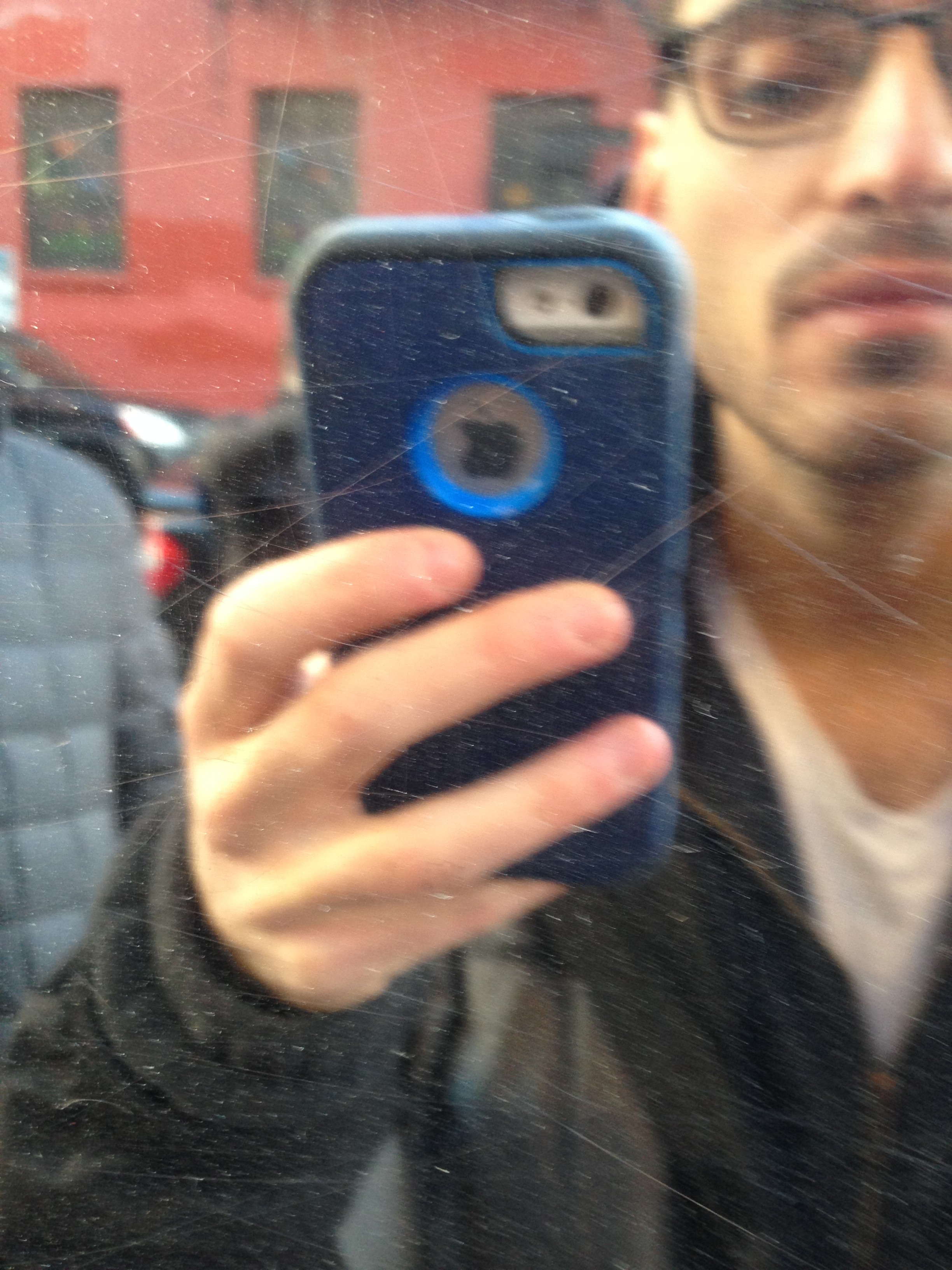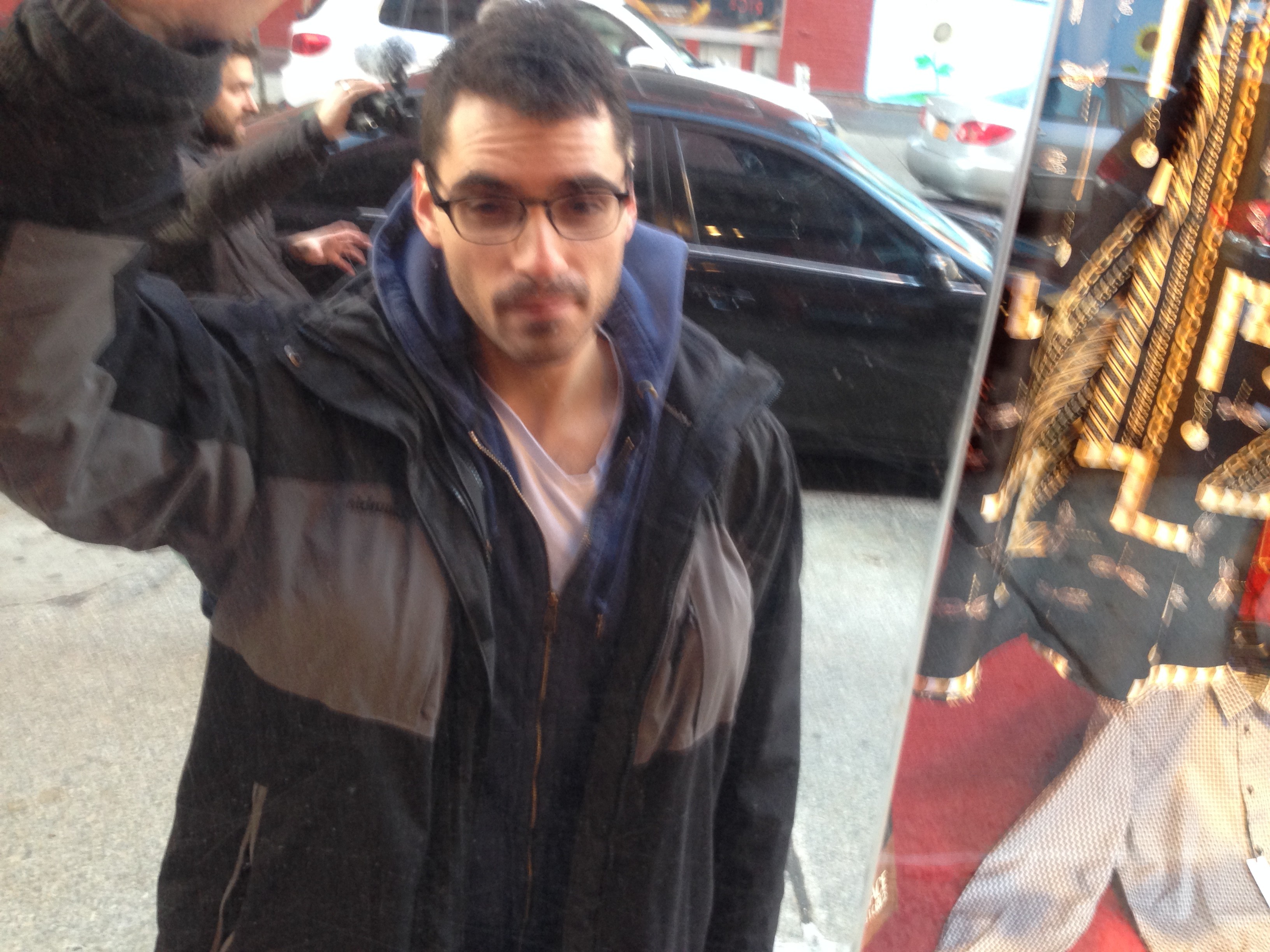By Matthew Morowitz
On December 14th, 2014 I had the opportunity to be a part of LES Drift #5 – Ofri Cnaani: Photo Op run by Lu Magnus Gallery’s Lu Lab Lower East Side Drifts series. Organized in collaboration with Residency Unlimited, the performative walk, lead by artist Ofri Cnaani, was described as follows:
“We take pictures of ourselves all the time. Our real lives took over the show. Framed, staged, and so good-looking. Better oversaturated. The real is ready to share, wants to be liked, tagged, and recycled.
Walking through the old and renewed Lower East Side, we will search for alternative photo-opps: From Xerox machines and scanners to photo salons; from mobile phones stands to surveillance control panels. We will drift along hidden places and won’t miss any opportunity to be seen, while asking ourselves what is meaning of ‘being present’?”
While the description is an accurate overview, the walk itself was enlightening, introspective, but an overall entertaining and uplifting experience.
Our lovely host for the day’s walk.
The walk began at 2:00pm in front of Lu Magnus’s gallery space on Hester St. Ofri, the artist and leader of the walk, showed up in a suit decorated with clouds and holding an umbrella with a similarly decorated interior. There were only a handful of us; some were writers for other arts and culture outlets like myself, some were artists intrigued by the project, and some were engaged laypeople who knew Ofri personally.
Introductory talk inside Lu Magnus gallery.
Our walk began by stopping at the end of the block, where Ofri took out a point and shoot camera and had each of us take a picture of someone in our group posed with her umbrella. After we all snapped pictures of each other, we then proceeded to a one-hour photo shop around the corner on Essex St. to drop off the film.
Have the members of the group shoot each other (with a camera), a great icebreaker!
From the photo shop, our group walked to Seward Park across the street where we were “coupled”, told to stand facing each other, and asked to really look at and examine our partners.
The coupling in Seward Park.
Afterwards, Ofri asked us to look around the park area and find objects that represented us to construct an alternative self-portrait. We then gathered together in a circle displaying our objects and explaining their significance.
Our alternative self-portrait objects, mine was the book of matches.
Yet, this wasn’t the end of our alternative self-portrait exploration; we then proceeded from the park with our objects to a nearby pharmacy where the picture aspect of this portion came into play, this time in the form of a Xerox copy machine.
Xerox picture instructions.
Each one of us in the group was asked to place our found objects, along with something we had on our persons, onto the machine’s glass plate, where they were scanned to create an image representative of ourselves as a whole.
My Xerox copy alternative self-portrait. The time then was 2:58pm.
With our copy portraits in hand we proceeded, walking more of the streets of the LES until we came to Jodamo, a store that has mirrored columns on its front, on the corner of Orchard and Grand Streets. This became the “selfie” portion of the walk; each member of our group stood in front of a column and we took three pictures of ourselves from different angles.
After taking this first picture I understand why people in mirror selfies always have that same look. They are saying “this is the only expression I can make while making sure my phone’s camera is held at the correct angle to take a decent photo.”
I honestly don’t think I was trying too hard with this one, which is why the top of my head is cut off.
My “oh boy! I finally figured out how to take a decent shot!” face.
Afterwards, we were all again partnered up and instructed to repeat the exercise, but this time with our partners directing how we should pose.
My director, the representative from Residency Unlimited, and me for this next round of selfies. Our facial expressions are summing up our reactions to the new instructions.
I like to imagine this image will one day be used for a movie poster. The film would be called “Selfie” and probably be a psychological thriller.
At least the last image managed to accomplish something the others weren’t able: getting my cell phone out of the shot.
From the mirrored columns, the group moved across the street to the Bank of America. Once again partnered up, our next assignment involved the ATM machine. As bank ATM’s are all installed with a camera taking almost infinite hours of footage constantly of the same routine (people unemotionally withdrawing money), we were there to shake things up a bit.Each couple proceeded to go in and, whether we laughed, high-fived, put on make up, and even walked in front of the ATM camera with our clothes on backwards, we provided a little piece of performance for whoever (or whatever) was monitoring the footage.
Instructions for the ATM portion.
After the bank, we walked into the streets of Chinatown until we came in front of an electronics store with a live feed camera display of the street that fed into a TV screen facing the front window.
The group and the live display.
We were then instructed to stand off screen and, one at a time, each of us would cross the path of the camera, strike a pose, and then go to the other side. One by one we crossed and created our “self-portraits in motion” as Ofri had described it, but our activities at the window screen did not stop there. After we had each crossed individually, we then crossed as a group with everyone making poses, followed by crossing crouched down so the camera would not spot us. We then crossed the street trying to avoid being seen as well.
After, we continued our walk with Ofri telling us to create a list, be it mental or physical, of all the “light related, photo related, image related words” that we would see as we walked.
My list of illuminated words.
From there we walked to Delancey St., turning in the direction of the Williamsburg Bridge. We at one point stopped into the T-Mobile store on Delancey and were told to go in, find a cellular phone or tablet on display, activate the camera, and leave a self-portrait.
The T-Mobile store assignment.
From the T-Mobile store we continued on our walk, eventually stopping at the corner of Delancey and Essex. At the corner we all gathered around and stated one word that stuck with us while noting the lighted signs on our walk. We were also given our final assignment: partnered up again we were to walk two-by-two, holding on to each other, one person with their eyes closed, one with eyes open.
Discussing the illuminated words we collected and receiving our final assignment.
The one with their eyes open was to lead the one with their eyes closed down the street. This way we were to “see” through description and imagination. We walked down the street, avoiding people, potholes, and anything else that happened to be in the sidewalk. During the time my own eyes were closed it felt as though I was moving a lot faster than the snail’s pace I maintained out of caution.
Walking blind.
Finally, the group gathered together outside the one-hour photo from the start of our walk and discussed our experiences walking blind.
Discussing our experiences walking with our eyes closed.
We then proceeded into the shop where Ofri obtained the developed prints and distributed to each of us the pictures of ourselves.
Picking up photos and the end of the walk.
Picture of me taken at the beginning of the walk. I really like this photo.
Overall, the experience on the walk expressive and fun; the actions Ofri had us participate in required us to let go, be open, and express ourselves, whether it was to the group or the general public. While participating in this walk I thought critically about how images play such a big role in our daily lives in ways we might not even be aware and was also forced to really examine myself at times. On top of everything, I enjoyed my time on the walk, as it broke up the monotony of my life with something creative and provoking in a part of NYC that I have often visited but never deeply explored. Ofri’s walk in the LES reaffirmed my love for public art by reminding me that as great as a work can be, and as engaged as it may make the audience, it’s the space between the two where the real meaning is formed.
After the walk I was able to sit down with Ofri, who answered some questions for me about her inspiration for the walk, memorable moments from the day, and the influence it might have on her artistic practices:
What was the inspiration for this particular project?
Two inspirations coming across; [on] one hand I work quite a lot with different technology and sometimes with new technology, I mix them up with machines I build. Overhead projectors that I turn into movie makers, photocopier connected [to a] kind of hybrid between a photocopier and an overhead projector that create one of a kind custom, original copy for people. Some of them in more performative matters, and some others in display, but I do use quite a lot of old media technology or media devices. [I’m] interested in the idea of technology as archeology, so that’s I would say one side.
When I spoke about a meeting point, as an artist, every artist in New York has like five jobs, and for years since grad school I have my own business of gallery and museum tours, and actually two or three people who came today are my customers. I have a very niche market; I do gallery and museum tours in Hebrew. Along the years I’ve been doing it I became very much interested in the format of the walk or the tour; in my case actually, more specifically the educational tour, which always has an expert, audience, and an object, as an art form. When I was invited by Catherine Grau from Lu Magnus to participate in this series of walks it was really kind of awesome and I thought “what will be my in?” which I combined methods or exercise, a more participatory approach, with my specialty. To look at this area of the LES, where we walk and look at the different imaging machinery, and how we present the self to ourselves.
Would you say that public practice strongly plays into how you work?
Yes, absolutely, and more and more I would say. Sometimes it’s more frontal, it’s almost like a lecture performance, some kind of live cinema. Other times, which I’m more and more interested, I build machines but create some kind of a presence, like I’m receiving people, [creating] their own images. The project I’m working on now [is] really community based, participatory based, kind of alternating the form of the guided tour or educational tour, and to think about new models of knowledge making. I’m specifically interested in collections and archives and libraries and kind of alternating the model of a guided tour in those in more of an open ended or socially engaged tours in them.
Has today’s experience taught you anything that will help influence this practice down the line?
Very much so, one of the nice things about a walk, it has to be limited in the amount of people who can participate. I’m very much used to public teaching or lecturing, so you can put 500 people in the crowd I’m fine, or 25 is like breakfast for me, but I think when you work with 10-15 people, there is so much space for each one and it was important for me after each experience we’ll share in different ways and it was a lot of fun. That’s definitely something I need to find ways to incorporate into my other practices, some kind of the feedback loop, so it’s not only frontal but also how it circulates the information, the thoughts, the experience, it circulates back during the art project itself, not a later point of people say what they thought but during the walk.
What was the most unexpected thing you noticed happen today?
I surprisingly enjoyed how willing [the] participants [were]; people were ready pretty much to do everything and I think often times we think about ourselves, and especially people in New York, they never say hi, they’re never with you, they’re always looking down, they’re stuck in the phone, which is a different form of blindness and not necessarily a smartphone makes you smart. Once you create a safe environment, people were ready to try and it wasn’t really the shock factor of doing something crazy or embarrassing, but pretty much everything exists between blocking yourself and not engaging. I think when we speak about participation in public space, it’s pretty much everything is in between blocking yourself and being completely blind or shock factor all day long, but it just kind of stretches the borders of our body and mind and community in order to better understand ourselves and our surroundings.
Why the LES? Would you replicate this project in another part of the city?
In this case it was part of the gallery and because I’m interested in defunct and new technology, it was perfect to think through. If I had a whole day to explore I could find [more], there’s so much in here. I think a few years ago I stopped thinking my art practice as project based and much more as an ongoing experience. I did a six day, eight hours a day performance for FIAC in Paris that I presented this hybrid combo machine of a bulky photocopier with an overhead projector so they share the same glass bit. People then brought one object from their personal belonging and then I had a huge, almost like a cooking station with boxes of all different ephemera so they picked two from my collection and then I crafted their own image map, which was first projected and then created this very kind of dramatic moment and almost magic created an original copy for them. This invitation came right after I came from Paris and it really kind of grew out of that and if now I’ll have another opportunity to work on a participatory walk it will be part of what we did today but maybe in a different location. It’s a much more easy and playful way of practicing my ideas and presenting them.
In addition to having put together this walk, Ofri will also be teaching a new course at SVA in the spring 2015 term that is related to Public art, Sites Unseen: Memory, Place and Identity, starting February 3rd. This six-sessions course is focusing on new forms of Public Art and looking at artists who use emerging technologies to study and shape the public sphere- past and present. In other words: How augmented space can be a form of excavation? More information about this course and how to register can be found here.

